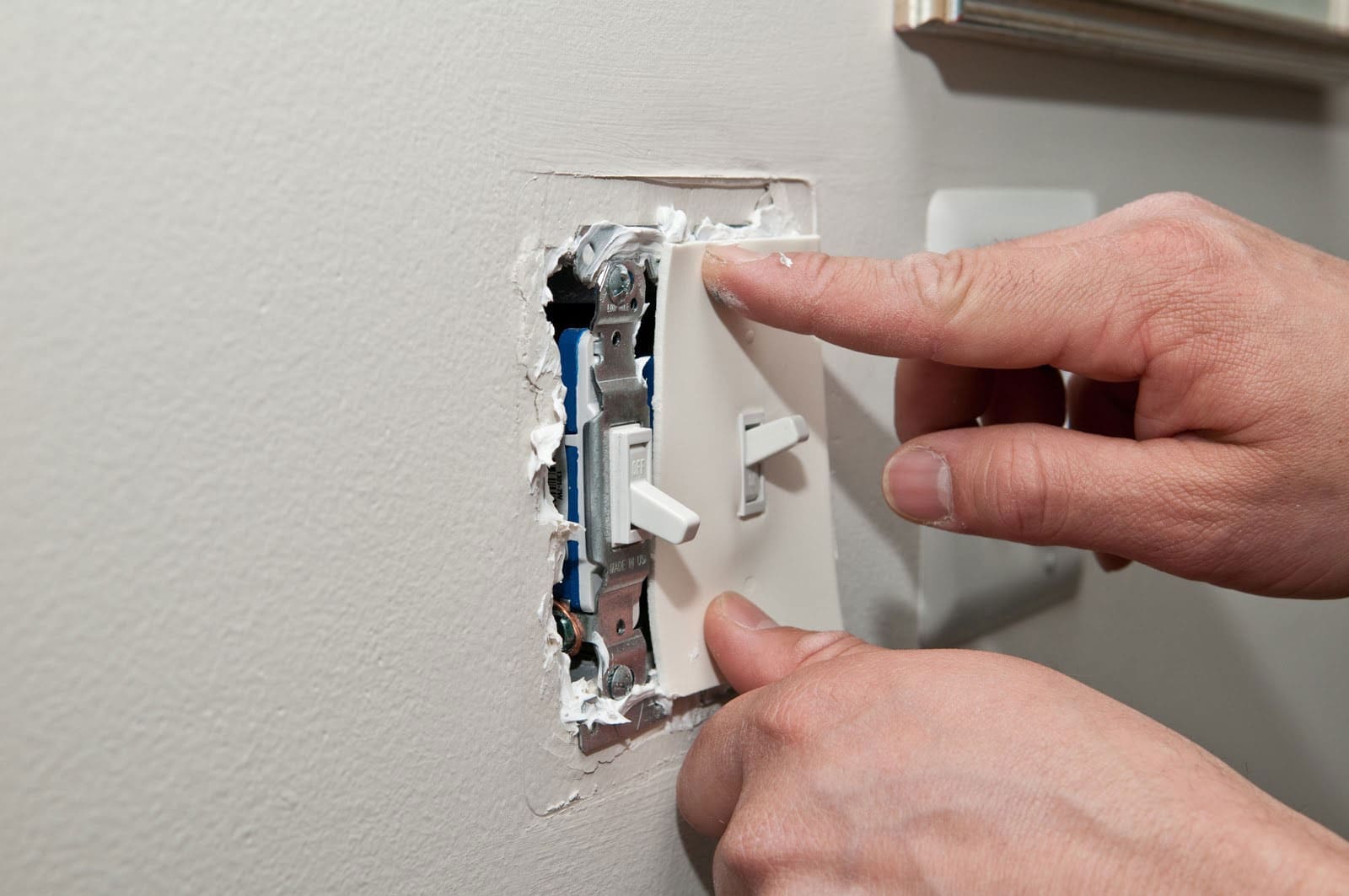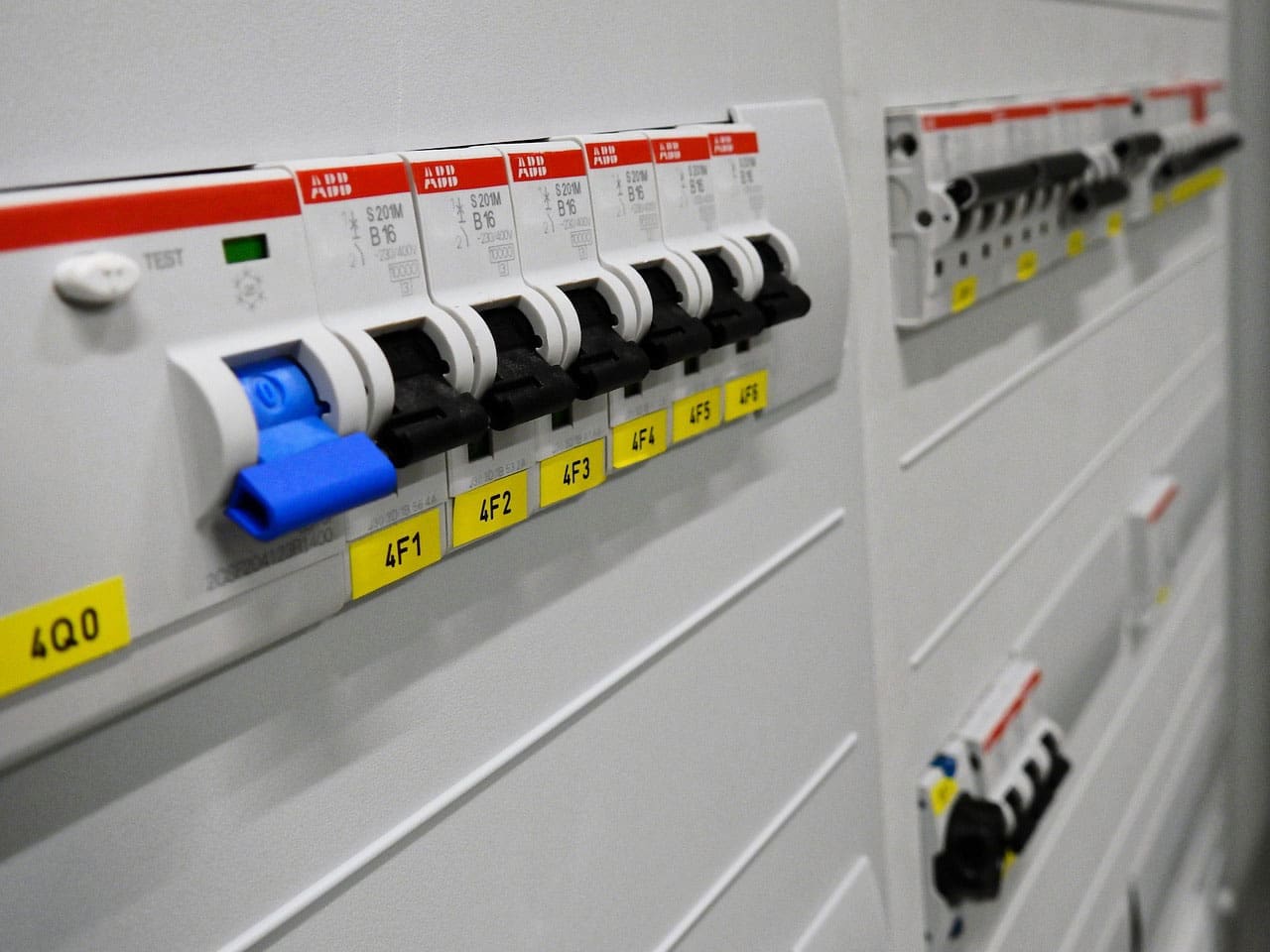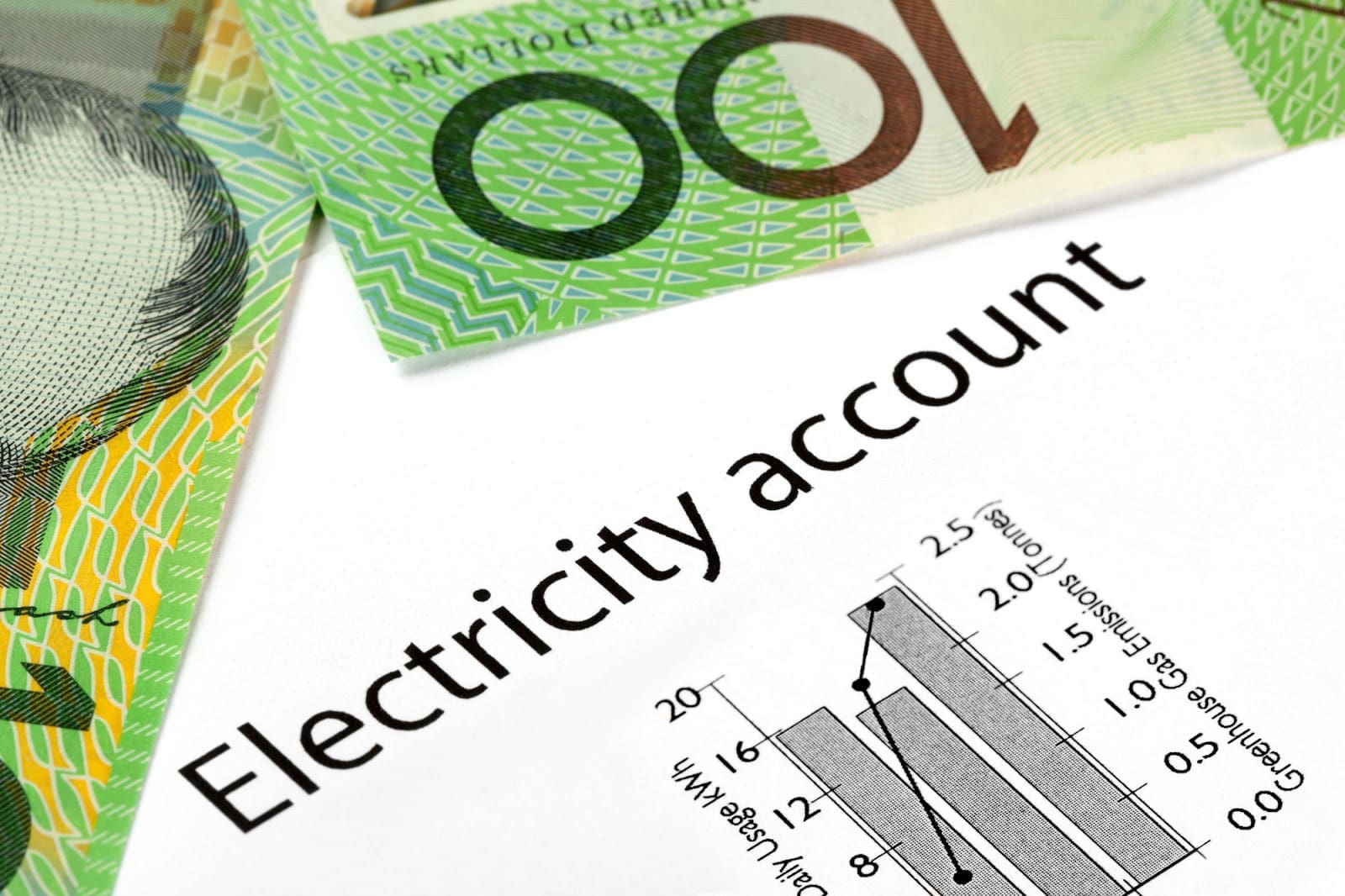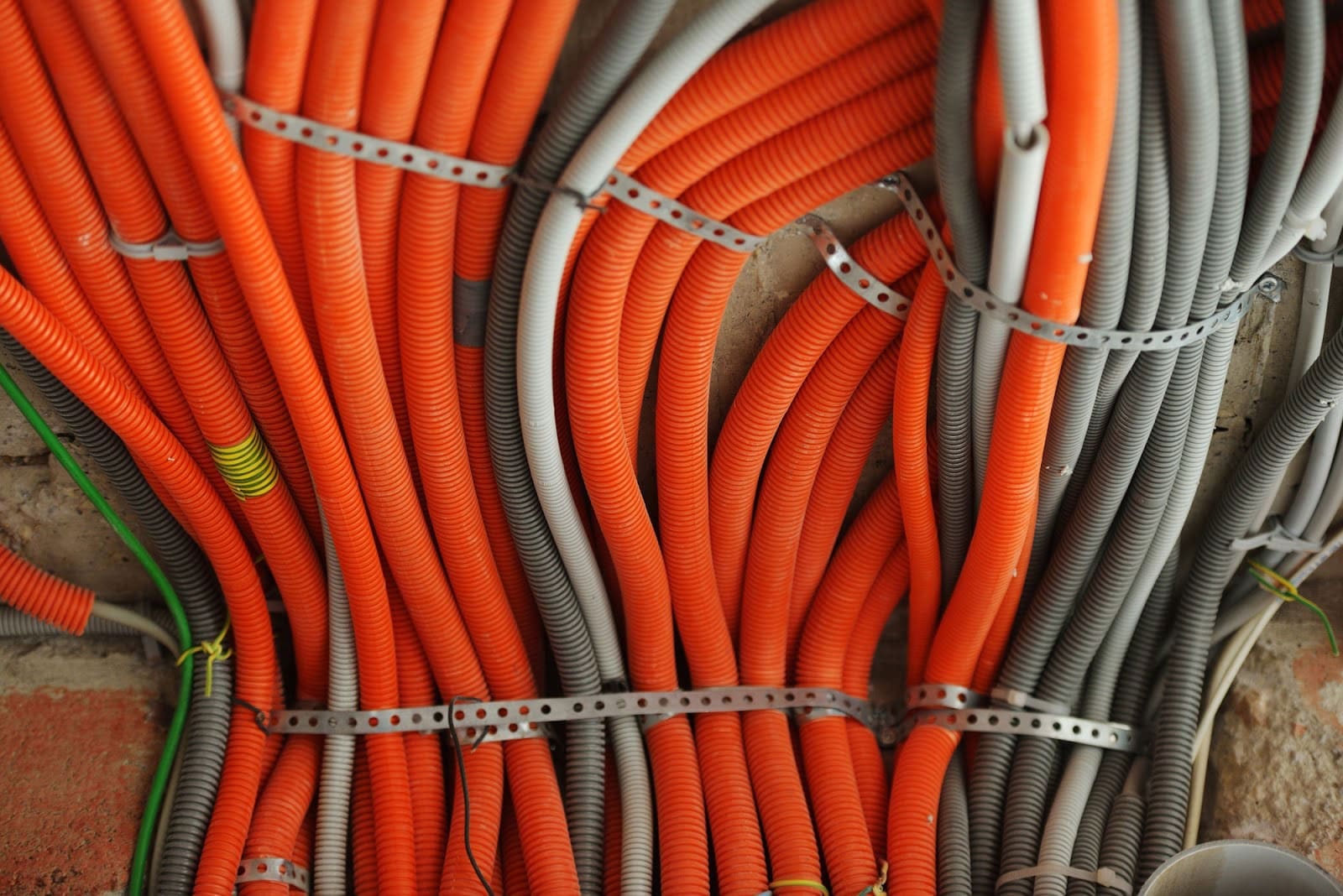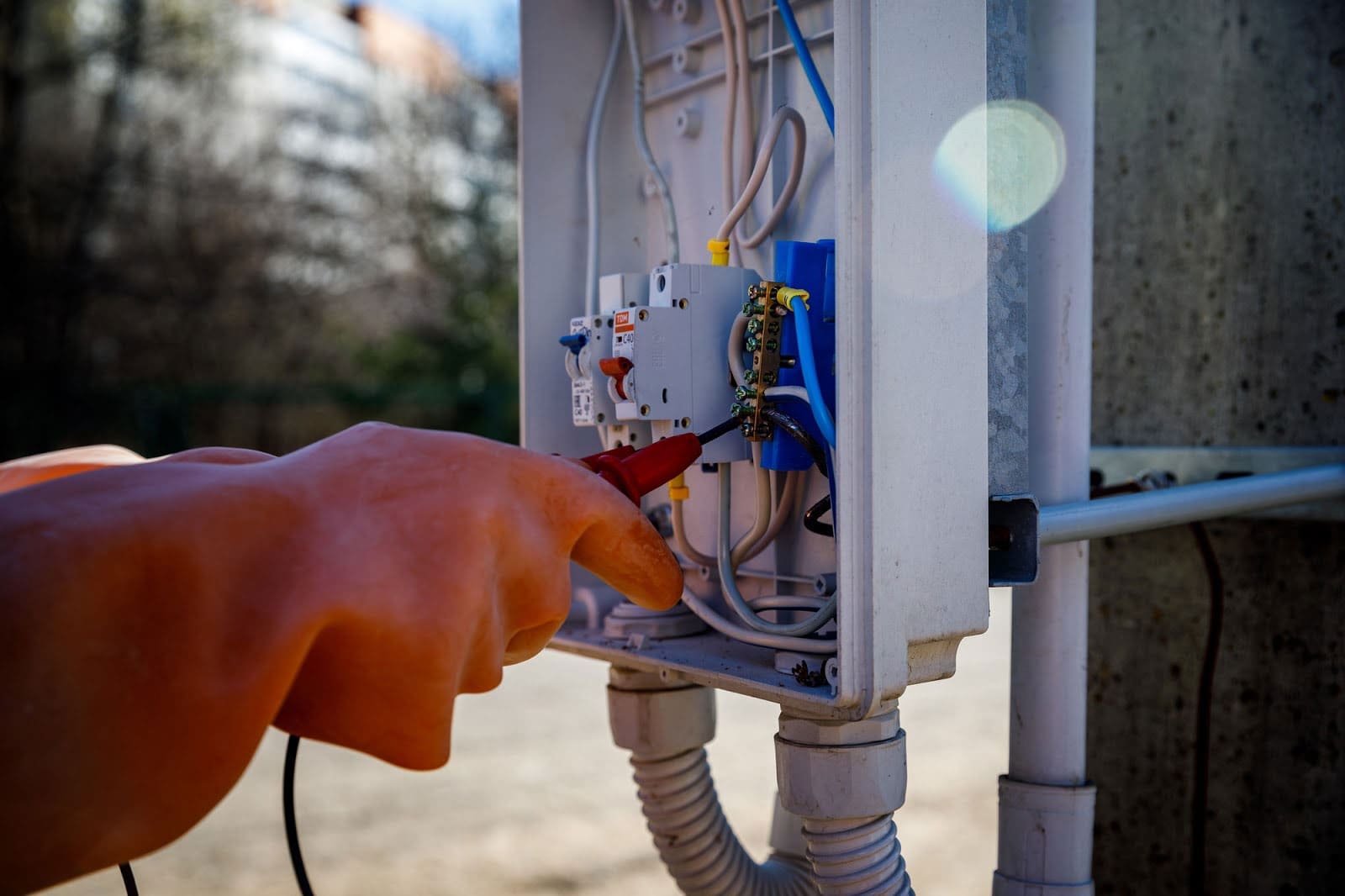
With over 10 years experience in the Domestic, Commercial & Industrial Electrical industry, we’ve seen many varying faults in our clients’ homes.
But one of the top questions we get asked is “How do I identify that there’s a problem with the electrical installation in my home?”
This article covers 8 common electrical faults in your home, steps for diagnosing the issue and when to call in the electricity experts.
Let’s begin!
1. Frequent Electrical Surges
Electrical surges, otherwise known as transients, are brief overvoltage spikes or disturbances on a power waveform that can damage, degrade, or destroy electronic equipment in your home.
These are electrical voltages of 10% or more above normal or recommended usage. Left unattended, they can overload your electrical equipment and cause some serious damage. This is one of the most common electrical faults that every homeowner should be aware of.
Spikes can occur when a large load (such as a large motor) is turned OFF and voltage on the power line increases for a short period of time. Overvoltage is a spike that lasts longer than a minute, sometimes caused when loads are near the beginning of a power distribution system if taps on a transformer are set incorrectly, or when renewable energy sources like solar panels are connected to the network.
Why Do Electrical Surges Happen?
The most causes of electrical surges might come from:
- Lightning strikes
- Damage to your power lines
- Faulty appliances
- Bad electrical wiring in the house
Although these electrical surges typically last only microseconds, frequent surges can be a sign of common electrical faults and may cause significant damage to the various electrical components in your home.
Over time, this leads to a reduced lifespan for your devices—not to mention the potential safety risks it poses.
The Voltora Guide:
Test For Electrical Surges With A Surge Protector
The first step to take is to see if there are actually surges in your electrical outlet.
That being said, surges are hard to detect, since they last so short (microseconds, remember?).
The best way to protect against surges in your home is to organise for our technicians to attend to your property and install Surge Protection Devices in your switchboard.
If you’re experiencing electrical surges often in your house, chances are that your electrical devices that are connected to the home grid, or your electrical wiring might be faulty.
Try these different steps to further diagnose the issue.
Two Different Reasons For Electrical Surges
There are two main reasons why frequent electrical surges might occur.
Faulty Electrical Device
The first reason is that there’s a faulty electrical device connected to the home grid.
Faulty electrical devices have problems in the flow of electricity, causing frequent power surges to the home grid.
What you’d want to do: Try to find and remove any cheap electrical devices or extension cables and power boards from your electrical outlets at home.
If surges still occur, then chances are that it’s an electrical wiring issue.
Electrical Wiring Issue
The second reason is that there’s a problem with the electrical wiring in your home.
In that case, you might want to call in an expert like Voltora Industries to further conduct expert diagnosis on your electrical outlets to find and resolve your power surges at home.
2. Brownouts In Power
One of the most common electrical faults that occurs at home is when you experience different “brownouts” in your electrical supply.
Even though electrical surges are more damaging to your electrical equipment at home, brownouts can also cause a fair share of damage themselves.
To top it off, serious brownouts in power can cause outages, electrical failure and create other power quality problems for your home.
Why Do Brownsouts Happen?
The voltage dips (also known as “brownouts”) happen when there’s a reduction of the voltage of 10% or more below normal or recommended usage, such as a 240-volt outlet dropping to 216 volts.
Voltage sags result from large motors being turned ON, to temporary short circuits in utility power lines. Undervoltage is a dip that lasts longer than a minute and can be caused by overloaded transformers or undersized conductors.
Left unattended, voltage dips can cause a ripple effect across multiple pieces of equipment.
Say for example you turn on a microwave oven which causes your light in your bedroom to dim or vice versa. When you see a weird distribution of power in your home like that, chances are you’re experiencing a brownout.
Think of it as the opposite of a power surge.
Two Different Reasons For Voltage Sags
Similar to electrical surges, brownouts in your electrical supply are commonly caused by two main reasons.
Cheaply (Poorly Made) Devices
Some electrical devices, especially those that are poorly made, are not properly wired, and this causes them to draw more power than they are supposed to.
This, in turn, creates that uneven distribution of power in your house and can cause brownouts to happen.
Damaged Electrical Devices
Sometimes, your electrical devices might be high quality, but because of possible damage to the wiring inside those electrical devices, this makes them to draw on more power causing you to experience voltage sags.
The Voltora Guide
When it comes to checking for brownouts, the steps to diagnose the issue is pretty much the same as checking for voltage surges.
Follow the steps that we’ve outlined above. For the sake of being succinct, we’ll list down the brief summary of our recommended steps here:
- Purchase a surge protector.
- Plug the surge protector, and check for voltage sags, by plugging in just one electrical appliance.
If you’re still experiencing voltage sags after testing your electrical devices, then it’s time to hire an expert like Voltora to conduct further diagnosis on the issue.
3. Light Switches Not Working Properly
Another one of the most common electrical faults that we see happening all the time in our clients’ homes is with light switches that don’t quite work properly.
This commonly occurs for new homes, and often is a sure sign of a poor electrical job.
Why Do Light Switches Not Work Properly?
Broadly speaking, there are two reasons why light switches don’t work properly.
Light Switches Have Been Superseded, Fixtures Removed
The first reason why light switches don’t work might be because the light switches have been replaced poorly, or the fixtures of the light switch removed.
Notably, this often applies to new homes and renovation projects (with bad workmanship).
Fault With Outlet, Circuit Or Wiring
Another reason why light switches don’t work might be a problem with the electrical outlet, the electrical circuit of the light switch or wiring inside the light switch.
This often happens when you or your contractor purchases light switches that are substandard in quality and thus are subject to poor electrical considerations.
The Voltora Guide:
If you experience poor light switches, in the form of dimmer switches not working, or just light switches that don’t work, it’s time to call in a professional electrician to do the job for you the right way.
4. Circuit Breaker Tripping Frequently
Some high-wattage electrical appliances can trip circuit breakers, especially when used alongside other power-hungry devices on the same circuit. This is a common electrical fault that occurs when the circuit is overloaded, potentially leading to power interruptions and, over time, damage to your electrical system.
Why Do Circuit Breakers Trip?
A circuit breaker is an automatically operated electrical switch designed to protect an electrical circuit from damage caused by excess current from an overload or short circuit. Its basic function is to interrupt current flow after a fault is detected.
In short, a circuit breaker is designed to protect your home in the case of an overflow of electricity in the electrical circuit.
What Causes Circuit Breakers To Trip?
There are many reasons why circuit breakers trip, but here are some of the most common ones:
High Powered Devices On The Same Power Source
One of the main reasons why circuit breakers trip might be that you’re using high power consumption devices on the same power source, that might overload the electrical outlet, thus tripping the circuit breaker.
Circuit Overload
Another reason why circuits overload is because of the overloading of power boards, or extension boards.
Some homes don’t have enough power points for multiple electrical devices, like a computer set up, for example.
When this happens, it’s quite common to see people purchasing power boards to power up additional electrical devices on the same electrical outlet.
While there’s nothing wrong with using power boards, how you connect them, and how you use them can mean the difference between a setup that works fine, and one that continuously trips your circuit breaker.
The Voltora Guide:
If you’re experiencing frequent circuit breaker trips in your house, it’s a good sign that there’s an overload of power somewhere at home.
Your job is to find out where.
Take these preventive measures to ensure that your circuit breaker doesn’t trip because you’re using your electrical appliances the wrong way now:
Don’t Use Power Consuming Devices At The Same Place
As previously mentioned, when you use different high powered devices like a computer and a hair dryer together at the same power outlet, this can potentially trip circuit breakers.
As much as possible, try to use high powered devices on separate power sources, to avoid power trips.
If you absolutely have to, then use the “low” settings on various electrical appliances that allow you to do so.
For example, you can try using the “low” setting on your hair dryer if you absolutely have to use it together on the same power source as your computer.
Use Your Power Boards The Right Way
Using your power boards the right way is another preventive measure that you can take to prevent circuit breakers tripping in your house.
Follow these simple best practices to make sure that you’re using your power boards the right way:
- Use power boards as a standalone. Never daisy-chain (one power board connected to another) power boards together.
- Make sure that you remove your devices when you’re not using them. These include charging devices, like your power adapter for a laptop.
- Ensure that your electrical devices are distributed well around your different power points, as much as possible. You don’t want to overload a single circuit.
Note: If your circuit board continues to trip even after you’ve followed these preventive measures, then chances are it’s a faulty wiring issue. Contact Voltora to get your electrical problem solved now.
5. Lights Too Bright or Dim
Sometimes, you might notice that the lights in your home are either too bright or too dim.
This doesn’t always affect your entire house—common electrical faults could cause the lights in your bedroom to be too bright while the ones in your garage remain too dim.
Why Do Faulty Lights Differ In Brightness?
When it comes to faulty lights, there are two main reasons for the difference in brightness that you experience.
Different Types Of Lights And Wattages
If your lights differ in terms of brightness, then chances are that there’s a difference in wattage.
As a rule of thumb, you’d want to make sure that all your lights come with the same wattage – this ensures an even distribution of power throughout your home, and prevent common electrical faults.
Bad Main Neutral Connection
All electrical devices come with a “neutral” wire. When it comes to lights, they share the same “neutral” wire in the main switchboard. In short, they share the same neutral connection.
The Voltora Guide:
Fixing faulty lights isn’t a simple DIY job, but you can try some of these simple steps.
Check That All Your Lights Have Similar Wattage
The first step that you can take is to make sure that your lights have similar wattages with one another.
Check your light bulb globe to see if all your globes are similar to one another and that they have the same wattage.
Bad Main Neutral Connection
If all your light bulbs are the same wattage, then chances are you have a bad main neutral connection.
In that case, the better option for you might be to call in a professional electrician who can diagnose the source of your bad lights, and fix them the right way.
6. Electrical Shocks
If you’ve been zapped by an electrical shock at home, you need to get it fixed immediately. This is one of the common electrical faults that require immediate fix.
Why Do Electrical Shocks Occur?
Faulty Electrical Devices
Electrical shocks are usually the result of faulty electrical devices. These shocks are created most of the time when you switch an appliance on or off that triggers the electrical shock.
Electrical Wiring Gone Wrong
Another common cause of electrical shocks is when your device has some damage in the wiring or is wired wrong in the first place.
The Voltora Guide:
Given that electrical shocks are no small matter, and could even be hazardous if checks are done incorrectly, we highly advise you to give us a call instead, so that we can come in and resolve the matter the right way.
7. High Electricity Bill
Have you ever looked at your electricity bill and thought, “Wow, did I really use that much power?”
Well, chances are, you didn’t—but common electrical faults around your home could be driving up your energy costs without you even realizing it.
Why Do Electricity Bills Increase Without Increasing Electricity Use?
When you get an electricity bill that you have to “overpay” for, chances are that either you didn’t practice good electricity use around the house, or some electrical device around your house is damaged.
It’s time to do some “damage” control!
The Voltora Guide:
Some of the ways that you could reduce your electricity bill involve conducting a little detective work around your house to find out the root cause of where those increased costs are coming from.
Electrical Devices Causing Power Surges
A common cause of increased electrical bills is often because of different electrical devices that cause power surges. This, in turn, leads to an increase in electricity use, causing a more expensive bill.
Appliances And Chargers Plugged In
Another area that might be causing you to use more electricity are electrical appliances that are plugged in and thus still consume power.
Some electrical appliances, like your TV, and device chargers, like your mobile phone charger, are often left connected to electrical power sources even when they’re not in use.
When that happens, there is still electricity flowing through, and this means that you’re still paying for that electricity!
The Voltora Guide:
When your electricity bill is higher than usual, you might want to take these preventive measures to solve them:
Identify Faulty Electrical Devices
As mentioned, faulty electrical devices cause power surges that add unnecessary dollars to your bill.
It’s a good idea to follow the steps that we’ve identified above to try and find these devices so that you can either replace them or stop using them entirely.
Turn Off / Unplug Unused Appliances And Chargers
When you’re no longer using certain electrical devices and/or chargers, make sure that you turn them off at the wall or unplug them and store them away.
This ensures that they no longer consume electricity from the power source, even without use.
8. Light Bulbs Frequently Blowing Out
Sometimes, light bulbs blow out. This is normal, especially after prolonged usage.
But when your light bulbs keep on blowing out, then it’s a sure sign that something is wrong with the way that your electric circuit has been set up.
Why Do Light Bulbs Blow Out One After Another?
Broadly speaking, there are many reasons why light bulbs blow out.
However, when they happen one after another in short periods of time (as a gauge, the average light bulb today lasts a minimum of 750-2,000 hours), you know that something is wrong.
These are some of the reasons why.
Lightbulb Wattage Too High
When your lightbulb has too high of a wattage (in the industry, this is called overlamping) for the light fixture, this could cause multiple problems.
For example, putting a 100-watt bulb into a 60-watt fixture could cause intense heat, melting the light socket and the insulation on the fixture’s wires. When this happens, the light bulb usually goes, too.
This, in turn, could lead to arc faults (where an electrical current falls off its intended path) which could even lead to a fire in your home.
Bad Wiring On The Circuit and Mains
Another common cause for your light bulb blowing out might be simply that it was wired incorrectly on the circuit or the mains.
When light bulbs are incorrectly wired, it often causes different problems for your light bulbs.
For example, incorrect wiring could lead to a sudden surge in your electrical circuits, which overloads the lightbulb and causes it to blow.
Voltora Guide:
When it comes to stopping your light bulbs from blowing out one after another, the best way to go about doing it is to call a professional electrician.
Since many of these steps depend on actually configuring your electrical circuit, consult Voltora before deciding how to proceed.
Some Additional Tips For Getting Your Electrical Setup Done The Right Way
In addition to the common electrical faults that we’ve mentioned, it’s a good idea to conduct frequent checks and safety precautions to ensure that your electrical setup is done the right way.
You’ll find that this lead to a safer and less stress-free life, from an electricity standpoint at least.
1. Frequently Check Your Electrical Appliances
Since electrical appliances are the most common cause of electrical faults, it makes good sense to check them frequently.
At different times, make sure that you consistently check your electrical appliances for faults and damages.
When you do find signs of damage, make sure that you either replace the electrical appliance immediately or have it checked out.
Note: Alternatively, you can schedule frequent electricity checks with a professional electricity company like Voltora. We’ll come to your house to check out your electrical endpoints, and make sure that all of your equipment are compatible with official Australian standards.
2. Safeguard Your Lightbulbs
Another important safety measure to take in your household electricity is to make sure that your lightbulbs are well secured.
That being said, make sure that your light bulbs are kept a safe distance from flammable materials such as plastics, upholstery, drapes, and bedding. This will save any chance of a possible fire starting.
Before changing light bulbs, make sure to switch off the electricity in the house, and unplug the light from the socket.
Also, you’d want to make sure that you use the correct wattage in your lightbulb.
3. Extension Cords And Power Boards
You also want to make sure that you use extension cords and power boards the right way at home.
Whenever possible, try not to use extension cords and power boards unless you absolutely have to. This prevents overloading of your circuits.
If you need to use an extension cord or power board, be careful not to overload it by plugging in too many devices—especially high-powered ones. Overloading can lead to common electrical faults, increasing the risk of overheating, short circuits, or even electrical fires.
Also, to ensure that these power boards and extension cords dissipate heat as easily as possible, make sure that you don’t cover them with anything, and keep them away from hot surfaces such as heaters.
4. Adequate Spacing For Your Devices
Most decent electrical appliances come with adequate cooling systems on their own.
Common examples include your refrigerator, your computer, and so on.
However, in order for these cooling systems to work effectively, they often need to be spaced out for one another. This is so that there is enough space for airflow. A lack of ventilation can lead to common electrical faults, overheating, and even potential hazards.
When you purchase electrical appliances, it’s generally a good practice for you to ask your manufacturer about the amount of empty space that an electrical appliance has, so that they can sufficiently cool down.
Make sure that you also space them apart so that they can cool down adequately.
Why Voltora Is Your Best Bet
At the end of the day, you can conduct your own electricity checks, but nobody loses by hiring a licensed and experienced electrician like Voltora Industries to check their home’s electricity and make sure that everything works perfectly.
For over 10 years now, we’ve helped our clients to resolve all of their common electrical faults and successfully prevented costly damages with our service.
Our expert electricians are well-versed in special equipment for electrical safety, and we’re fully committed to helping you stay in a safe yet functional home.
If you’re ready to make your home an electrically safe one, then don’t wait! Call us on 1300 799 430, or request a quote for an electricity check today.
Lets get started



